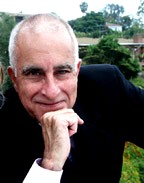The Discovery, Excavation and Analysis of a 3000 Year Sequence of Colonial, Late Woodland and Deeply Buried, 1,700 B.C. Transitional Period "Broadspear" Living Surfaces at the Little Wood Creek Site, on the Hudson River at Fort Edward, New York - 1986-87 (Grossman et al. 1990)
[Peru Gold] [3D NYC] [Fort Edward] [DV-Winter Rescue] [Targeting w Histoirc GIS] [Geophysical survey] [Feature Photogrammetry] [DV-Color Lidar]



















